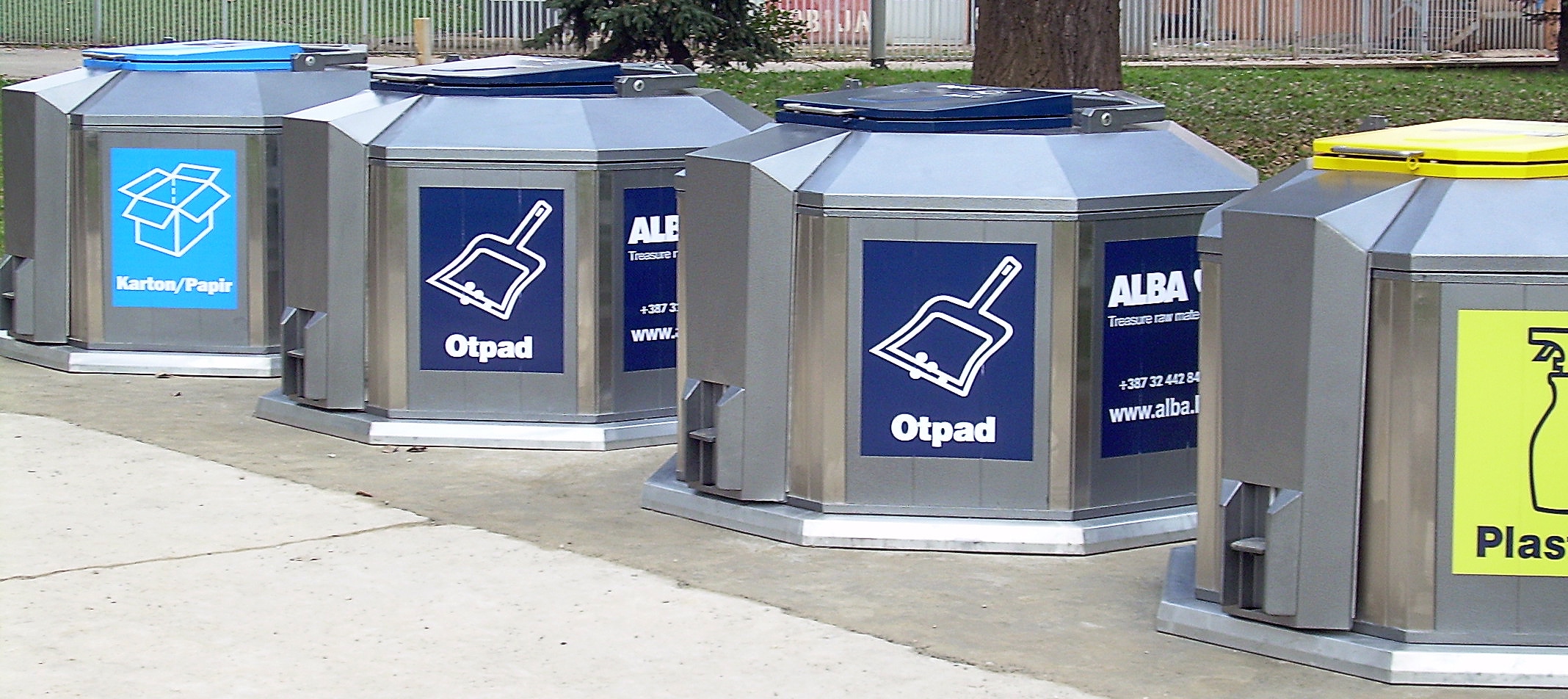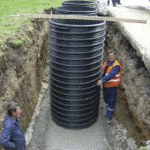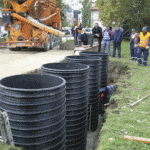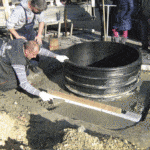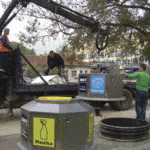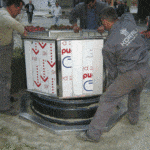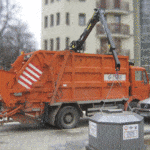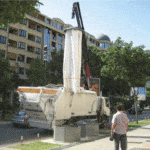The underground container KORALI is a product that enables successful and rational organization of collecting, sorting, removal, treatment and disposal of municipal waste. It promotes the work of the municipal system and significantly improves the quality of the environment.
The experiences of the cities in which the underground waste containers KORALI are installed confirm that the design of the product meets the high aesthetic requirements. They are easy and quick to install, easy to load and unload, easy to maintain and easy to operate.
They are certified according to the standards that apply to this type of product. The company KORALI provides quality service and maintenance of its product.
DESCRIPTION AND TYPES OF UNDERGROUND CONTAINERS
The underground containers KORALI consist of: plastic manhole of high- density polyethylene with a service life of over 50 years, of the octagonal concrete pad, octagonal metal casing, large metal cover on which there is a hole with a small lid for throwing in waste which is closed by throttling and bags-containers for waste collecting. Container for sorting waste contains a special opening for sorting.
The container may be equipped with a pedal for the foot opening of a small lid. Below the casing and large lid there are steel subconstructions which provide long life thereof.
The container is made of quality materials, resistant to corrosion which makes it durable and highly functional product. All steel parts are hot – dip galvanized.
Case of the containers can be made in color according to customer specifications. Container for sorting can be created in all colors as agreed with the buyer.
They are produced in several basic types:
-KVR3-100/1,5 of 1,5 m³
-KVR4-80/1 of 1 m³
-KVR5-120/3 of 3 m³
-KVR6-150/5 of 5 m³
-KVR5-120-NK/3 of 3 m³
-KVR6-150-NK/5 of 5 m³.
Containers KVR3-100 /1.5 and KVR4-80/1 of 1.5 and 1 m³ are made for conditions of installation and use where space is limited, the number of users is adequate to capacity of these containers.
Containers KVR5-120-NK/3 and KVR6-150/5 are equipped with pedal for the foot opening of a small lid for the insertion/throwing in of waste.
SELECTION OF LOCATION FOR INSTALLATION OF UNDERGROUND CONTAINERS
• Define the approval and permissions from the relevant city authorities to set up an underground container to a location in accordance with the requirements and recommendations of local services for urban planning.
• Place for setting up the containers must be outside of underground installations, in order not to be damaged during installation of these.
• Place for setting up the container must be outside of overhead installations, trees and objects in order to be emptied with the help of the vehicle with a crane.
• Position of the container must be accessible to the vehicle with a crane that empties the container.
• Select the location where most of waste is disposed and in accordance with that define the number of containers in one place.



